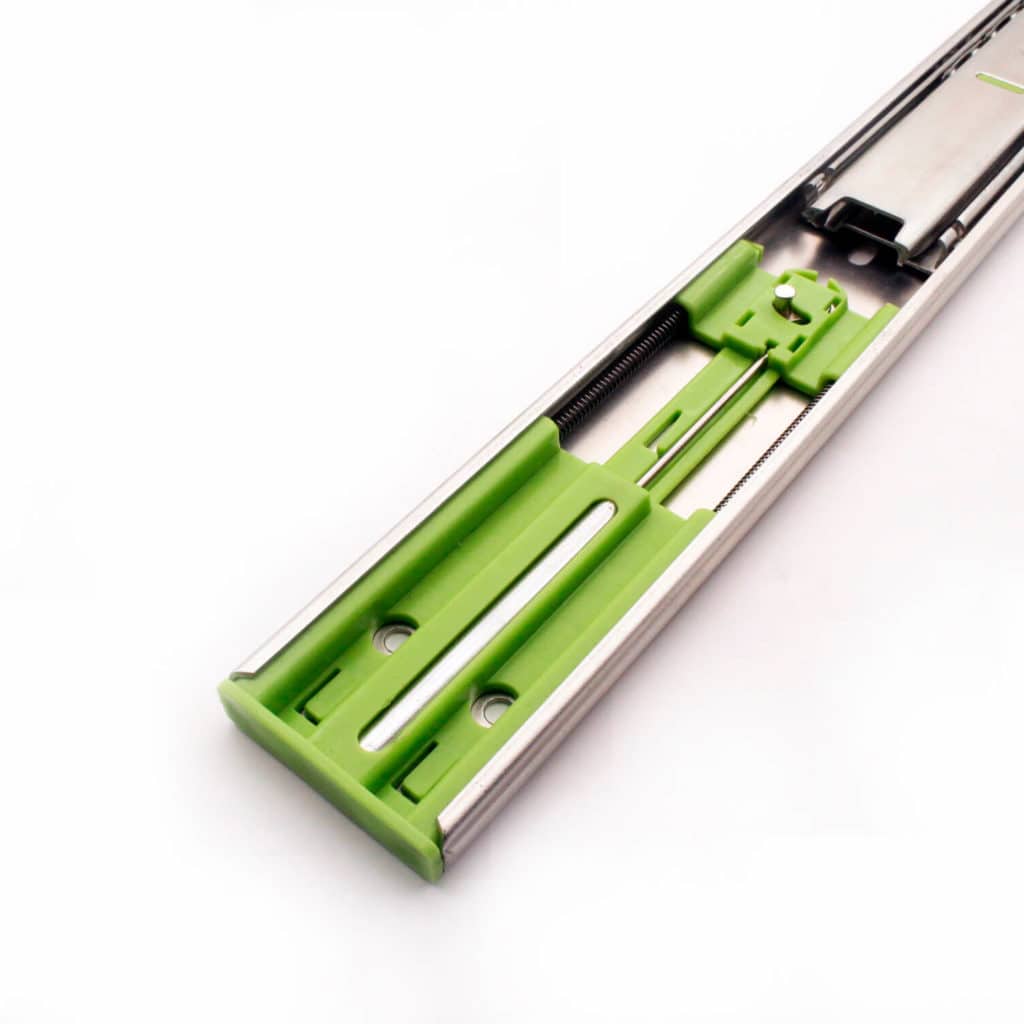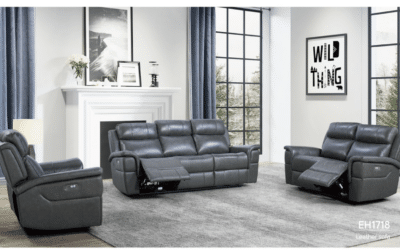The drawer slides you choose may make or break the quality of the furniture hardware you’ve been working on.
Whether you’re remodeling your kitchen, bathroom, closet, or pantry, or working on a personal project, selecting the correct drawer slide is the finishing touch.
Here is a helpful guide to install and differentiate types of furniture drawer slides.

Basic Types of Drawer Slides and Ways of Installing Drawer Slides
A lot of homeowners and business owners take time when choosing different drawer slides that would fit their aesthetics, furniture accessories, and needs in their property.
Most of us don’t worry about drawer slides until they don’t function correctly.
When choosing slides for your drawers, take in mind how they’ll be attached, the width of the slides, how to install them correctly, and how much load they can support.
Below is a basic introduction to the varieties of drawer slides, including the advantages and disadvantages of each type of drawer slide, as well as methods for correctly installing drawer slides.
1. Ball-bearing slides
Under high pressure, a ball-bearing slide offers the ideal combination of strength and value.
Ball-bearing drawer slides, which are often constructed of stainless or carbonized steel, are tougher and more durable than many earlier drawer slide varieties.
These slides are held in place by a ball-bearing retainer between the telescopic components of the system.
Ball-bearing slides are offered in both progressive movement and telescopic slide versions.
All slide components move synchronously in progressive action slides, allowing for seamless and quiet opening and closing movements.
Telescopic slides, on the other hand, are divided, and individual slide segment motions occur in steps, with each segment completely extended before distributing the motion of the next section.
Advantages
When compared to roller guides, ball-bearing sliders can operate in a wider temperature range.
They are versatile in that they may be used for a wide range of furniture materials, even those subjected to greater loads.
Sizes are available in a variety of sizes.
Ball-bearing slides guarantee the smooth running of your furniture and many years of trouble-free service.
Disadvantages
Ball-bearing slides are more susceptible to dirt. One wrong clearance of this type of sliders and it won’t operate smoothly.
How to install ball-bearing slides?
Here is a step-by-step procedure for installing bar-bearing slides:
- Begin by screwing the drawer-mount component into place.
- Attach the slide with a screw in a vertical slot at the front and one at the back, with the slide positioned flush to the cabinet front and bottom edges.
- Continue on the other side of the drawer, then detach the cabinet-mount parts of the slides.
- For the proper distance, place the bracket’s wrapped shoulder tightly against the rear of the face frame.
- Tape a torpedo or any other short level to the slide and use it to position the slides up or down.
- To guarantee that the slide installs parallel to the cabinet side, measure the space between the slide and the cabinet side.
- Connect the rear end.
- Attach the back mounting bracket ($1.50 per) to the cabinet.
- Insert the drawers into the cabinet screws until the catches are secure.
- Tap in the remaining screws to hold the slides in place.
Here are detailed instructions on how to install ball-bearing drawer slides by doublewide6 Repairs LLC:
How To Install Ball Bearing Drawer Slides
2. Wooden drawer slides
Drawers have traditionally slid on wooden drawer slides, which are pieces of wood tenoned onto horizontal rails on the front of a cabinet.
When a drawer will not be directed by the cabinet’s sides.
For instance, if the cabinet has a protruding face frame into the drawer opening.
The runners include guides to prevent the drawers from slipping left or right and binding when they shut.
Using wooden drawer slides in furniture and cabinet components requires precise manufacturing and installation to allow for smooth drawer movement without being too loose or too tight.
While getting the right fit is challenging, it results in a completed drawer that doesn’t need any extra hardware or fake face components.
Advantages
When the wooden drawers slides are properly installed, they function well.
They are the gold standard in exquisite furniture, not least because it requires skill to make a drawer fit securely yet not being so tight that it is difficult to open and shut.
Wooden drawers slides need no extra financial commitment other than your time, while mechanical slides do.
They enable your drawer front to operate as a completed face, eliminating the need for any additional faces.
Disadvantages
They do not allow for full extension: If you extend the drawer out past a certain point, it will slump and may even fall off its opening.
In humid climates where moisture varies much from season to season, a well-fitted drawer may cling.
How to install wooden drawer slides?
- Prepare all of the supplies required to make wooden drawer slides.
- Choose your wood and utilize an old rail width as a reference. You’d be able to set the border from there.
- After that, make three passes with the board, resulting in three blanks.
- Turn the rail in an L-shape to reinstall the fence.
- Turn each blank 90 degrees and run your blade through it again. You must verify that the exterior measurements match those of the original rail.
- Form these blanks into a “T.”
- Take the stem’s dimensions.
- Make a groove on either side of the stem length.
- Move the barrier in 1/8 inch and go through the blanks again. Repeat until the majority of the stuff has been removed. Any leftover wood may be chopped off and cleaned up with a chisel and sandpaper.
- At this stage, you’ll need to position the rail on the dresser frame. Mark the end of the fame with a pencil.
- The rail should be parallel to the fence so you may adjust your blade to aligns with your pencil marking with attention to the blade width.
- Move the fence in 1/8-inch intervals until the rail is clear and the end is reached.
- Install the rail on the frame. Remember to use a square to guarantee that it fits properly. Drill a hole through the rail and into the frame beforehand.
- Attach the rail to the frame with a wood screw. You may need to put another wood screw on another one on the other end if required for your dresser arrangement.
3. Bottom mount roller slides
Bottom-mount drawer slides are attached to the bottom right and bottom left edges of a drawer box.
They are often guided by rollers rather than ball bearings.
Bottom-mount slides are often partial extensions, but complete extensions are sometimes possible.
The drawer box is supported by an angle flange on the bottom mount.
It aids in indexing the side, making installation faster and simpler.
Bottom-mount slides are designed to be used in frameless cabinets.
Advantages
Bottom mount roller slides are supplied in pairs and are installed on the cabinet sides.
They are linked to locking mechanisms that are attached to the drawer’s bottom.
These slides are a popular option for people who do not want metal hardware to detract from the appearance of their wood cabinets since they are not visible when the drawer is open.
Bottom mount roller slides are usually quiet and do not produce the metal clicking noise that other slides generate.
Disadvantages
Bottom-mount slides have the drawback of being more costly than other kinds of drawer slides.
They do not need much space between the edges of the drawer and the cabinet, but they do have clearance requirements along with each drawer.
Bottom-mount drawer slides are often utilized in high-end, custom-made cabinetry for these reasons.
How to install bottom mount roller slides?
- Align the slide flush with the front of the drawer and center across its width for inset drawers.
- If your drawers will have an overlaying front, notch the drawer box so that the slide fits flush with the drawer box’s front face.
- Place the slide in the center and secure it with screws in the front and rear.
- Mount the slide to the face frame and secure it with one screw, as shown in the picture below. For embedded drawers, first, install a 34″ thick mounting block within the face frame to which the slide will be screwed.
- Use a mounting bracket to secure the slide to the back of the cabinet, ensuring sure it is square to the face frame. If your cabinet has a dust frame, instead of the back, you may attach the slide to it.
- Nail-in or self-adhesive glide pads should be added to the face frame where the drawer-side bottom corners will slide to support the drawer.
4. Side mount drawer slides
Side-mount slides attach to the drawer and cabinet body horizontally.
Because of their durability and weight-bearing capability, they are utilized in a broad variety of applications.
Side mount drawer slides are available with a roller or ball-bearing mechanism.
The space required between the slides and the sidewalls of the cabinet opening is usually approximately half an inch.
If horizontal width is an issue, try under-mount slides with comparable characteristics.
Advantages
They’re very simple to install in casework.
Side mount drawer slides make it possible to remove the drawer by simply disengaging a lever.
To install the drawer, gently slide it into place. If the components are not precisely aligned, the slides may be damaged – and then press until you hear a “click.”
Pull the drawer out and completely shut it to ensure a good fit.
Disadvantages
The main drawback of using side-mount drawer slides is that they limit the horizontal breadth of your drawer.
Side-mounted drawer slides are not entirely smooth; there is a slight metal-on-metal noise when the arms of the slides close or open.
Side-mounted slides take up space the size of the cabinet.
This space varies based on the model, but typically needs 1/2′′ on each side.
As a consequence, in most cases, the front of the drawer must be covered with an applied face.
This face may be inset, partial overlay, or full overlay, as seen below.
When selecting these or other mechanical slides, be careful to read the specifications and installation instructions to ensure that the slides will work with your design.
How to install side mount drawer slides?
- The first step is to take one of the side mount drawer slides and remove the drawer profile slip from the slide by pushing the trigger disconnection lever.
- The next step is to figure out where you want your drawers to go. Mark the location where you wish to connect the slide using a pencil.
- Mark the middle of the drawer box and the cabinet sides next.
- Draw a centerline both on the drawer box and the cabinet sides using a carpenter’s square.
- The cabinet slide will then be attached.
- Place the slide so that the front end of the slide is 1/16th of an inch away from the front of the cabinetry.
- Now, use a drill to pre-drill the holes needed to connect the slides to the wood.
- Following that, you will use your drill to connect the screws that will hold your slides in place.
- Put the profile on the drawer’s side, ensuring that the front of the profile is level with the front of the drawer. To center the shape on the drawer’s side, use the centerline mark (number). When it’s even, start pre-drilling your pilot holes.
- Screw the slides into place using your screws.
- Insert the rear of the drawer profile into the carrier groove while holding the drawer up to the cabinet.
- Slide the drawer all the way to the back into the cabinet until it is fully inside the cabinet.
If you want, you can check out this video for a more comprehensive guide to install side mount drawer slides:
How to Install a Side Mount Slide (CSH 39.1145 series) for Face Frame and Frameless Cabinets
5. Takeaways
A drawer slide is a component that links your drawer to the frame and allows it to move in and out easily.
There are many kinds of drawer slides on the market.
The best one for your project is one that suits your furniture materials as well as your personal preferences.
Most drawer slides may be simply installed on your one. Some slides, though, may need expert assistance, so be sure you know which one you’ve purchased.






0 Comments